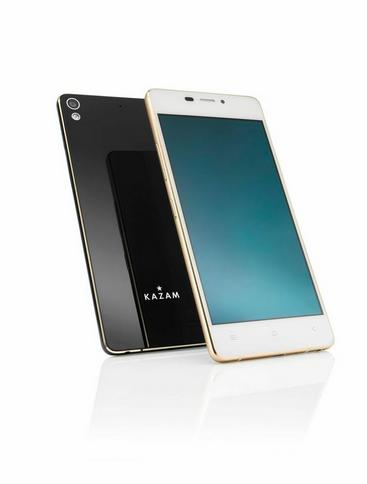Cars and walking, it's over! In 2018, urban mobility is motorized and electric, and one of the best ways to get around is still by electric skate. Deck, engine, format… to navigate this jungle, follow our guide to choose your board!

In recent years, we have seen a small revolution in the world of urban mobility. If previously transport solutions were limited to the metro / car / bicycle, the progress made in the field of electric motorization has clearly changed the situation. If the electric bike (or VAE) is the spearhead of this conversion, many alternatives revolve around it: Segways, electric scooters and now even electric skateboards.
How an electric skate works
The electric skateboard is simply a skateboard with electric motors for driving the wheels and a battery for powering the motors. Between these two elements, there is a controller, the real brain of the skateboard, which will be responsible for calculating the power necessary to send to the wheels, controlling the state of the battery cells (to avoid overvoltages for example) and making the interface. between the skateboard and the user.

The most iconic electric skate
To do this, each electric skateboard is paired with a remote control allowing you to control acceleration, braking, and even driving modes for the most advanced systems. Unlike a scooter or an electric bicycle, it is not necessary to “throw” your skateboard by performing a kick-start. Electric skateboards are electric vehicles and not electrically assisted, like gyropods for example.
If having done skateboarding will logically be an advantage in terms of grip, it is not necessarily necessary to have rolled his bump in skateparks to master the mysteries of electric skateboarding. Beginner's word, the handling is rather instinctive and if the Segway o ff ers the most difficult curve of progression, the skate is closer to the scooter, a few minutes will be needed in the vast majority of cases, a few hours for the most recalcitrant.
With prices oscillating between 300 and 400 euros for entry-level models and which can go up to 2000 euros for high-end skateboards, combined with a really nascent market, it's still hard to know which skate to choose. Fortunately, Idroid is here!
Longboard, cruiser or classic
As with bicycles, there are several types of board / skate, each with its advantages and disadvantages.
Longboard is the most popular format among the brands of electric skateboards. As the name suggests, a longboard is… a long board. Measuring an average of 38 '', longboards are the most comfortable and easy to handle boards. The large contact patch allows beginners to place their feet more easily and advanced users to ride faster thanks to the added inertia. Small subtlety, the longboards do not have "tails", this raised edge typical of the skateboard allowing to make figures and quick U-turns. The ideal format for long distances or for beginners.

Most longboards now have a built-in grip
The cruiser is an intermediate format, shorter than the longboard, it retains its width and wide wheels. Quite often there is a kicktail, very practical for making quick maneuvers or going down / up sidewalks. This format, more nervous, is more easily transportable, but sacrifices, in part, the comfort of sliding. The cruiser adapts well to short urban journeys (<5 km), but beyond that, I recommend switching to the longboard format. The Boosted Mini S / X is an example of a good cruiser with a length of around 30 inches.
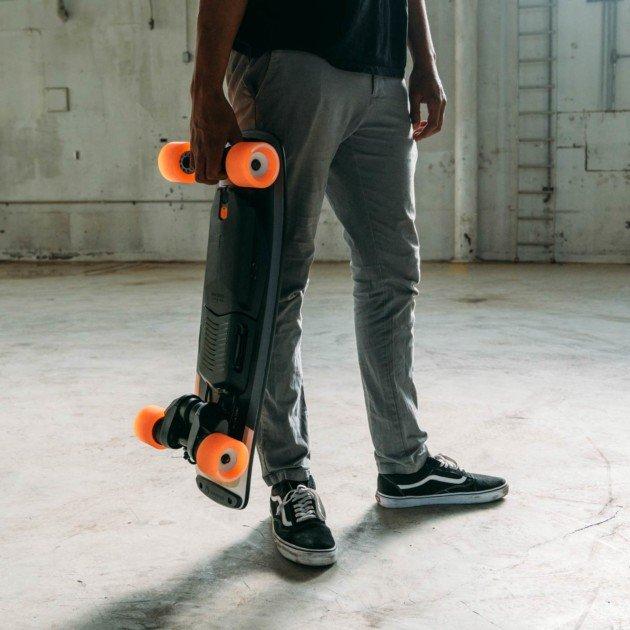
An interesting compromise: the electric cruiser
The classic skateboard (and its dwarf version the Penny board) is much less common in the electric version. Indeed, its small wheels, concave deck and relatively short size are not suitable for long distances. Anyone who's ever tried to cross a curb without a minimum of skills knows what I'm talking about. One of the only advantages of this format, common to the cruiser, is that it can be carried by hand from the trucks, without the deck rubbing the ground.

Already a jerk alone, with an engine it's suicide!
Of the three formats, I highly recommend the longboard. It will prove to be more reassuring, more stable, and allows the crossing of obstacles without hitching, as long as the wheels are sufficiently wide.
The deck
The deck is the backbone of skateboarding, it is he who keeps all the elements in place (trucks, battery, controller…) but above all who will support your weight when traveling. A deck is made up of a stack of di ff erent layers of wood or composite, each ply having its own properties: rigidity, hardness, density, etc. The ideal skate has a board that's strong enough to withstand the bumps of city riding and soft enough to dampen vibrations.
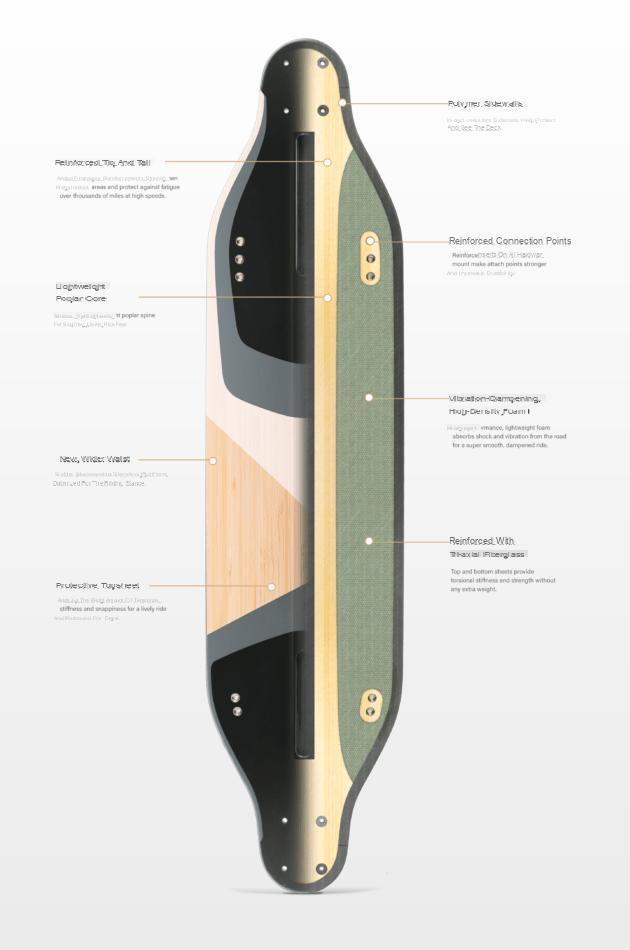
The deck is always made of several plies to combine rigidity and comfort
Currently, Boosted Board offers the best compromise with an extremely flexible bamboo deck, so much so that you can jump on it without breaking it. A good deck allows you to move more comfortably, the irregularities of the road are smoothed out and the road handling will prove to be much healthier at high speed.
Some brands allow deck swap. The user can replace the original deck with a deck of their choice, whether it is a model sold by the brand or by another brand. Very practical for hackers or riders accustomed to a specific deck. If possible, take the time to do a few meters with the skate before purchasing, the driving sensations are really different depending on the brand.
Hub or belt motor
To power electric skateboards, two technologies co-exist: hub motors and belt motors.
at hub
The first type of motorization (hub) is the most common and also the easiest to set up. The motor will be housed directly in one or more wheels and under the impulse of the electric current, start to turn. As with all electric motors of its kind, there is a rotor and stators, the good old principle of the dynamo.
These motors have the advantage of being light, reliable and economical. The power can vary between 250 W and 1000 W per motor, which is more than enough to go up slopes without effort. The main disadvantage of this type of engine is the impossibility of replacing the polyurethane which covers the wheels in the vast majority of cases. Some brands now offer removable systems, like Meepo, but this is far from the norm.
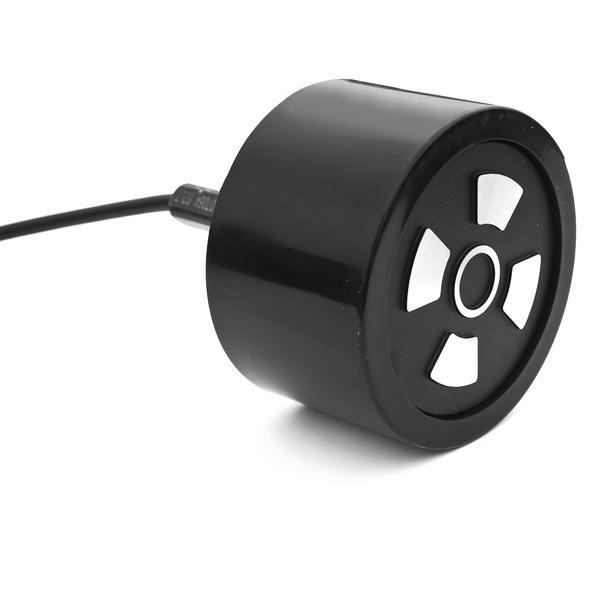
A hub motor is fully enclosed and requires no maintenance
Another advantage, these motors are quiet and relatively easy to adjust. It is common to find it on entry-level models, but gradually also on high-end models, like the Insertion Raptor. The hub system also allows regenerative charging when braking, the daily gain in autonomy can reach up to 20%.
Last point, hub motors allow kick-pushes. To put it simply, once the battery is empty (or even full) you can push your skate like a normal board. Like on an electric scooter, it saves a bit of battery life or simply allows a “classic” ride for aficionados of the genre.
Belt
Currently only Booster Board and Evolve Skateboard still use a belt drive system. The engine sits off the wheel, often on the truck, and a reduction belt then connects the wheel to the engine.
The disadvantages are numerous: much noisier Due to the multiple gears required, the belt wears constantly and needs to be replaced regularly. The motor and the wheel being decoupled, there is also a possibility of jamming if a foreign body intervenes, which could cause a breakage.
However, if the leader of the electric board continues to cling to the belt motor, there has to be a reason. And it is indeed the case.
YouTube linkSubscribe to Idroid
The di ff erent types of belt drive
Belt motors offer more torque than hub motors at the same horsepower, so starting is more responsive, as is braking. A belt motor will need less distance than a hub motor to brake, provided the wheels withstand the shock.
Belt motors allow the wheels of your choice to be fitted, which will directly affect handling and comfort. This is the big weak point of hub motors, if the wheel is worn, the entire hub will have to be replaced, on a belt motor, it is sufficient to change the wheel only.
Whatever your choice, I still recommend to favor skateboards with at least two drive wheels. Braking will prove to be much safer and firmer with two wheels than with one, as will starts on uneven ground.
The wheels (city or all terrain)
Small point on the wheels, like on a car, this will be the only element in direct contact with the road. It is therefore essential to choose them wisely, as this has a direct influence on handling and even your safety.
The vast majority of skateboards will be mounted on large diameter wheels, at least 80mm. Unlike a classic skateboard where we prefer compact wheels for maneuverability, on an electric skate we prefer large wheels with large diameter, for better grip. The larger the diameter of the wheel, the more stable the skateboard will be at high speeds, but it will also require more power to start and maintain speed.
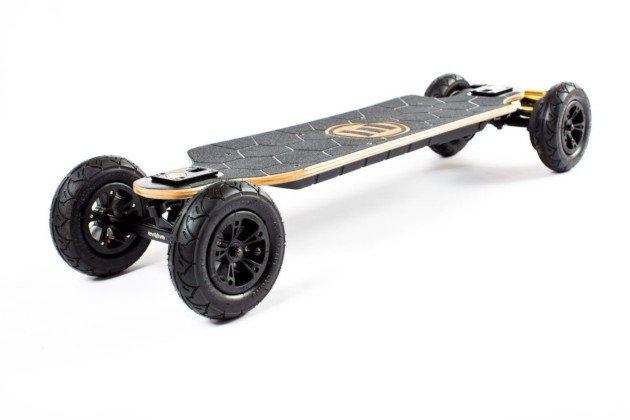
One of the rare truly off-road boards, the Evolve Bamboo GTX
The wheels are made of polyurethane, a composite material that resists abrasion well and adheres to tar, just what you are looking for. As on a classic skate, there are several hardnesses, the soft compounds favoring the grip to the detriment of the speed and vice versa for the hard compounds. An 85A gum will turn out to be very soft and a 100B very hard for example.
Caution : on a skate with a hub motor, the driving wheels do not always allow the rubber to be changed, it will then be necessary to replace the wheel AND the motor.
Battery capacity
The fuel of an electric skateboard is its battery. As with any electronic device, there are various capabilities and technologies, each with their own advantages and disadvantages.
In fact, 99% of batteries use Li-Po, lithium cells. They have the advantage of providing a very high storage density, no memory e ect and a very low discharge rate. Like an electric car, these batteries are made up of dozens of small cells, connected in series: the famous cells.
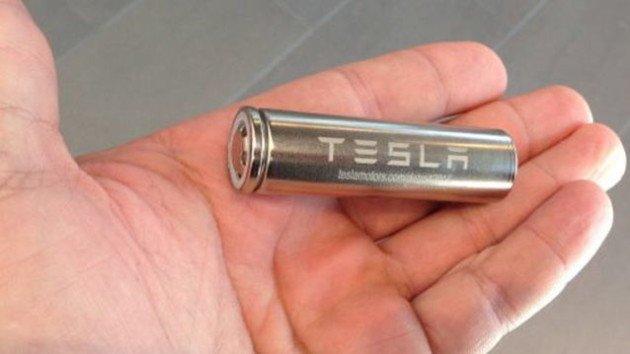
A battery is above all thousands of cells like this one
The total capacity is then measured in amps and it is common to give values in amps / hours, which makes it easy to calculate the autonomy of the skateboard if we know the power of the motors. For example, a skate with a 4000mAh / 36V battery and two 250W motors will have a range of around 15 km.
The higher the capacity, the better the autonomy. Allow 10 km for the less enduring skates and up to 40 km for the best students. Be careful, however, the boards with the best autonomy are also those which will take the longest to load unfortunately, no Quick Charge possible.
Beyond the total capacity of the battery, it will also be necessary to pay attention to the maximum voltage delivered by the latter. Once the battery is well used, the output voltage can vary greatly and reduce the performance of the skate: it is the swing voltage. In fact, this results in erratic acceleration, or even a clean cut, which can be annoying in a climb for example.
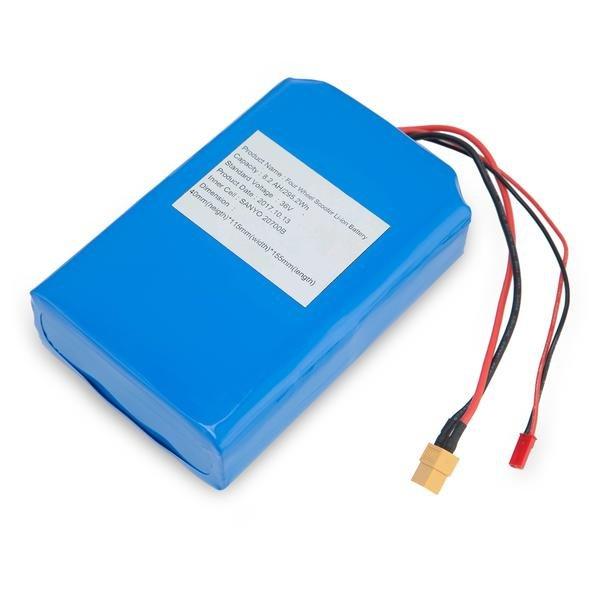
The battery is a replaceable element, but it is also one of the most expensive
Last point, the vast majority of skateboards have regenerative braking which allows you to glean a few kilometers every day. However, if the battery is or nearly fully charged, this mechanism can cut off the braking system. Once the battery is fully charged, the controller will not know what to do with this excess energy and will activate a circuit breaker system to prevent any charging. Be careful if you live in a sloping street, do not plan to fully charge the battery if you lower the battery ...
Waterproof et dust proof
Water, dust and electronics rarely go hand in hand, and this is all the more true on an electric skateboard, which will have to face them every day.
Let's start with the basics, if your skate isn't explicitly labeled Waterproof, don't take it out on a rainy day. At best, it will be damaged and at worst you could seriously injure yourself ... If an electric skateboard can withstand brief immersion such as a puddle of water or a slightly wet road, complete immersion should be avoided.

The Inboard M1 is IP54 certi fi ed, so it can weather the rain, but beware of slipping!
More the main problem with humidity will be adhesion. Smooth polyurethane wheels are not at all suitable for this use, sudden braking will throw you to the ground as will acceleration a little too hard. If you really want to ride in any weather, equip yourself with grooved rubber wheels. They will wear out faster, go less quickly, but will remain perfectly usable on wet roads.
Regarding dust, it will be especially dangerous for bearings and motors. A dirty bearing will slow down the skate and may even jam. in extreme cases. Do not hesitate to apply a little bit of chi ff on or to brush your bearings from time to time, the glide will be all the better. For off-road use, there are suitable wheels and bearings, from Evolve and the bamboo series for example.
After-sales service and warranty
In Spain, the legal guarantee of conformity is 2 years, which means that any device purchased from a Spanish dealer can be repaired within two years from the date of purchase, at no cost other than return transport. .
Unfortunately, this warranty often does not apply to wear parts (logic) such as the wheels, the deck or, more annoyingly, the battery. But the real problem lies above all in the absence of an importer or reseller, it will generally be necessary to make the purchase abroad and then have it delivered to Spain.

90 days warranty, beyond ... everything must be bought back!
Customs duties, VAT, administration fees, we don't teach you anything on this subject, but also see if the brand offers an international guarantee. Yes, the conditions of sale or use can be restricted to the country of origin, so impossible to have a broken skate repaired without putting your hand in your pocket, ugly.
More annoying, the warranty of electric skates is generally quite short, with exceptions such as Enertion which guarantees its board for two years, or even more with an extended warranty. In general, allow between 3 months and 6 months of warranty.
Equipment and where to ride
On the flat, an electric skate can reach 40 km / h and even much more for the most powerful models, a speed comparable to a 50cc scooter. Getting well equipped will therefore be necessary if not essential.
Equipment
First, wear a helmet. If possible a full or a model that will protect your jaw and at least a classic bicycle helmet. The cross and enduro models are well suited, the compromise between protection and aerodynamics. A fall, even at low speed, can prove to be severe on your physical integrity, so I repeat: wear a helmet.
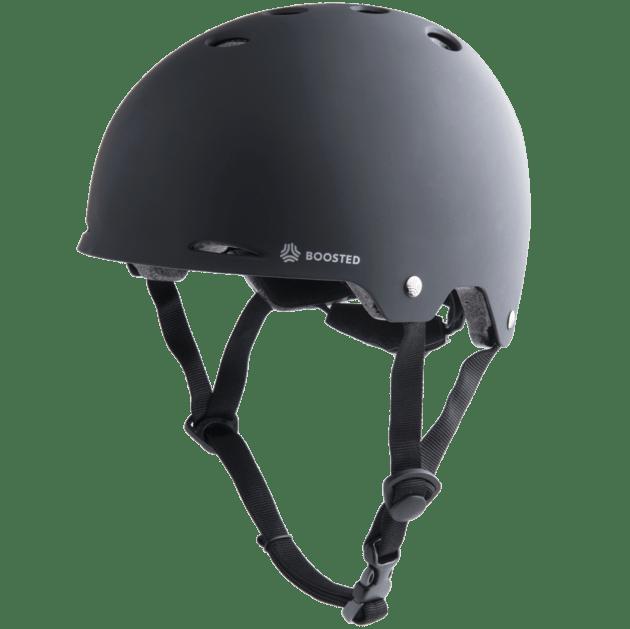
Wear a helmet, wear a helmet, wear gloves, wear gloves
Second essential, wear gloves. In the event of a fall, extending your hands will be your first reflex, you might as well take advantage of it. The ideal remains the summer motorcycle gloves, designed to resist abrasion, su ciently mobile and padded in the contact areas. Cycling gloves also work: although less robust, they will prevent burns and abrasions.
Finally, last tip: be visible. Wear reflective armbands and a light in low darkness conditions. Never forget that in the eyes of cars you will be even less visible than a cyclist and you could even be mistaken for a pedestrian, distorting the idea of the speed at which you could move. A small hand horn or a doorbell will be very convenient to navigate your way through town, the electric motors remain too quiet to make you hear.
Where to ride
In the city, it is strongly recommended to take the cycle paths when they are available. At medium speed, you can blend in with the mass of cyclists and take advantage of their size to open a path for you.
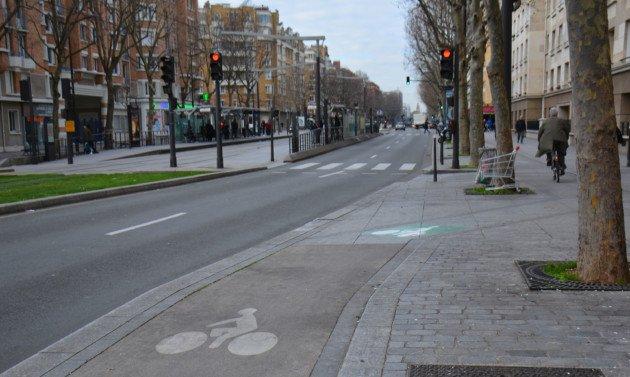
Choose cycle paths, unless you are constantly driving at 40 km / h or more
If there is no cycle path, you can stay on the sidewalk, as long as your speed does not exceed… 6km / h! The de fi nition of a walk. Beyond that, no excuses, it will be necessary to meet the cars on the road. Keep right and even if you have the right priority, you never will. A car, a truck, a bus will always prevail in your path. Rest assured, on the total journey you will always exceed them thanks to your excellent average.
Watch out for parked cars, you are never safe from a door that opens or a wild pedestrian trying to cross between two cars. In short, watch where you are going, not where you came from.
Legislation
A legal vagueness persists in the small world of electric skateboarding, an alternative means of transport, it falls into the category of "person displacement devices."
As mentioned above, it is better to use the skate on cycle paths or on the road, in order to avoid clashes with pedestrians. According to the law, it is forbidden, the skate is not a bicycle or assimilated… Unthinkable!

I am the loaaaaaaaaaaaaaaaaaaaaaaaaaaaaaaaaaaaaaaaaaaaaaaaaaaaaaaaaaaaaa
Fortunately, it is perfectly tolerated by the police, even encouraged. As long as electric skateboarding is not assimilated either to a bicycle or to a mixed pedestrian (rollerblading), it will be necessary to ride in the gray zone. Zone which will turn green very soon I am sure, the big cities accepting with kindness these alternative and non-polluting modes of transport.
Regarding insurance, it is often included directly in your home insurance, consult your insurance policy to check this. If insurance is not compulsory, it remains essential, therefore: get out covered.
The final word
The electric skateboard is a great alternative to classic transport. Easier to store than a bicycle, more fun than an electric scooter and de fi nitely classier than a gyro.
If the number of brands and manufacturers is gradually growing, the best models are still expensive, but are able to carry you over several tens of km without incident and without e ff ort. For the neophyte, it remains the best alternative, Boosted Board in mind.
For those who like the challenge, it is possible to build your own electric skateboard from start to finish, choosing your own deck, trucks, wheels, motors and even your controller. Forums / sites have specialized in e-skate and there is no shortage of tutorials to assemble the board of your dreams. Brands like Mellow Board even offer ready-to-assemble kits, just add a deck and you're good to go.
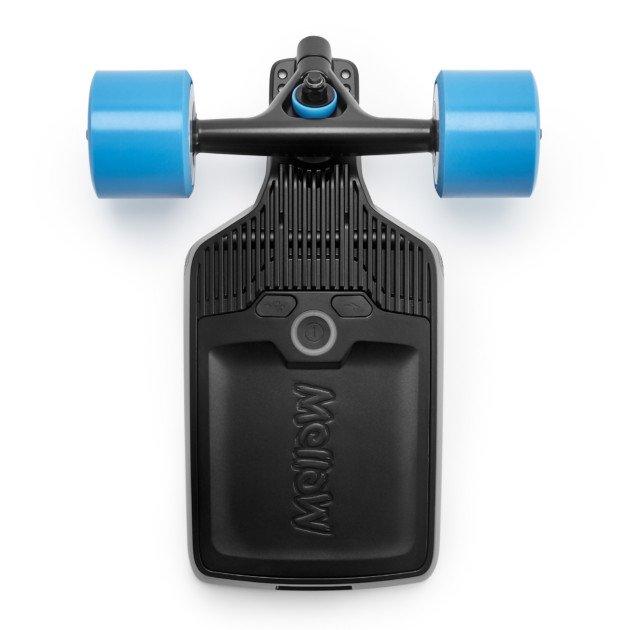
Mellowboard offers a kit that fits most decks on the market
Finally, for the most curious, or the most economical, it depends on the chinese scene o ers a plethora of electric skateboards with surprising technical characteristics and often sensational quality / price ratio. The Meepo Board is at the forefront with a skate under 350 euros surprisingly performing. There remains the question of reliability, as these brands are still too young to have the necessary hindsight, only time will be able to confirm or reverse this trend.
In all cases, be sure to respect the highway code, equip yourself accordingly and do not attempt dangerous maneuvers. If Robert Zemeckis, MTV and Tony Hawk made skateboarding the pinnacle of cool, it would be a shame if we were to ruin their e ff orts… right?
























